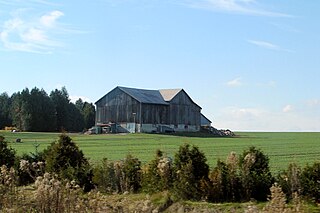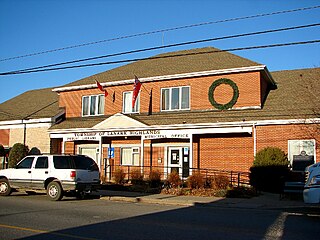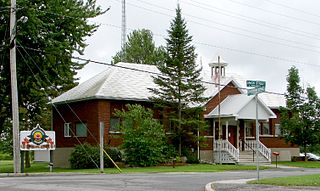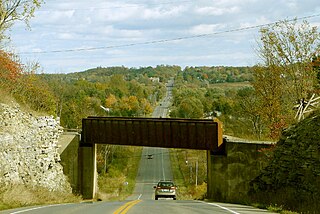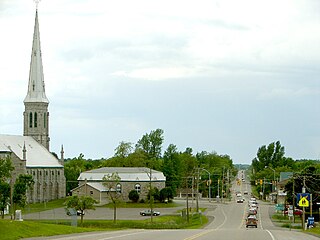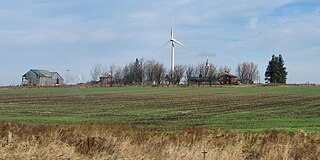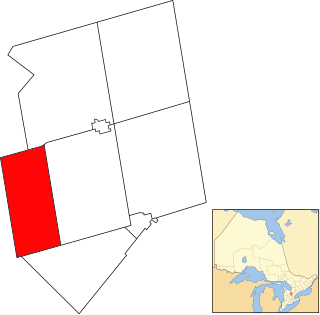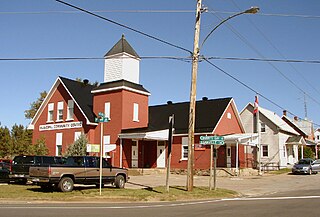Mulmur | |
|---|---|
| Township of Mulmur | |
 | |
 Mulmur within Dufferin County | |
| Coordinates: 44°11′30″N80°06′30″W / 44.1917°N 80.1083°W Coordinates: 44°11′30″N80°06′30″W / 44.1917°N 80.1083°W | |
| Country | |
| Province | |
| County | Dufferin |
| Incorporated | January 1, 1851 |
| Government | |
| • Mayor | Janet Horner |
| • Federal riding | Dufferin—Caledon |
| • Prov. riding | Dufferin—Caledon |
| Area | |
| • Land | 286.77 km2 (110.72 sq mi) |
| Population (2011) [1] | |
| • Total | 3,478 |
| • Density | 12.1/km2 (31/sq mi) |
| Time zone | UTC-5 (EST) |
| • Summer (DST) | UTC-4 (EDT) |
| Postal Code | L0N 1M0 |
| Area code(s) | 519 and 226 |
| Website | www |
Mulmur is a township in Dufferin County in Southern Ontario, Canada. There are a number of original settlements such as Mulmur Corners, some of which can still be identified as to location, including Rosemont and Stanton. [2]
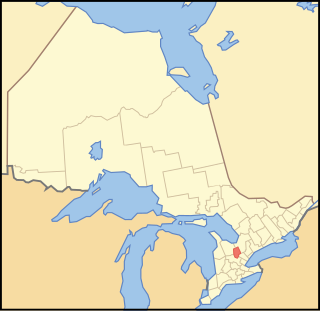
Dufferin County is a county and census division located in Central Ontario, Canada. The county seat is Orangeville, and the current Warden is Paul Mills. The current chief administrative officer is Sonya Pritchard. Dufferin covers an area of 1,486.31 square kilometres (573.87 sq mi), and its population is 61,735 (2016).

Southern Ontario is a primary region of the province of Ontario, Canada, the other primary region being Northern Ontario. It is the most densely populated and southernmost region in Canada. The exact northern boundary of Southern Ontario is disputed; however, the core region is situated south of Algonquin Park, the latter being in an area of transition between coniferous forest north of the French and Mattawa Rivers and southern deciduous forest. It covers between 14 and 15% of the province, depending on the inclusion of the Parry Sound and Muskoka districts which also lie in the transitional area between northern and southern forest regions. With more than 12.7 million people, the region is home to approximately one-third of Canada's population of 35.1 million.

Canada is a country in the northern part of North America. Its ten provinces and three territories extend from the Atlantic to the Pacific and northward into the Arctic Ocean, covering 9.98 million square kilometres, making it the world's second-largest country by total area. Canada's southern border with the United States, stretching some 8,891 kilometres (5,525 mi), is the world's longest bi-national land border. Its capital is Ottawa, and its three largest metropolitan areas are Toronto, Montreal, and Vancouver. As a whole, Canada is sparsely populated, the majority of its land area being dominated by forest and tundra. Consequently, its population is highly urbanized, with over 80 percent of its inhabitants concentrated in large and medium-sized cities, with 70% of citizens residing within 100 kilometres (62 mi) of the southern border. Canada's climate varies widely across its vast area, ranging from arctic weather in the north, to hot summers in the southern regions, with four distinct seasons.


